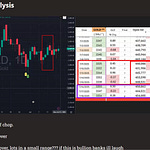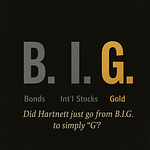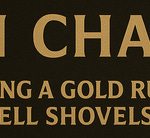Housekeeping: This was very well-received by the attendees who participated actively. Thank you. Options were discussed, as were the CFTC flows, CTA positioning, and Bullion Banks’ continued reticence to trade. This went very long. Might be best viewed in chunks topically. The outline and transcript will help
**NO SUNDAY CLASS NEXT WEEK**
Start With this post for Notes, reports and slides used:
MasterClass Topics Discussed
1. Introduction and Historical Context
Origins of Interactive Brokers (IBKR): Began as Timber Hill, a market-making firm.
Thinkorswim (TOS): Emerged as competition with advanced layouts and modular functionality.
Comparison with Fidelity and Other Platforms: General similarities and user adaptability challenges.
2. Platform Functionality and Layout
Transitioning Between Platforms: Adjusting to new layouts akin to moving from Mac to PC.
Key Features Overview:
Options chain and its significance.
Greeks displayed and prioritized for trading (Delta, Gamma, Theta, Vega).
Strike arrangement logic and display settings.
Customization and Efficiency: User preferences for arranging features based on trading style.
3. Options Trading Fundamentals
Options Chain Breakdown:
Differentiating in-the-money vs. out-of-the-money options.
Importance of intrinsic value and volatility analysis.
Greeks in Depth:
Practical use of Delta, Gamma, Theta, and Vega.
Focus on at-the-money volatility over implied volatility for trading decisions.
4. Trading Strategies and Execution
Market Behavior Insights:
Importance of color-coding and visual cues for quick decisions.
Role of breakeven points in assessing market moves.
Directional vs. Volatility Trading: Tailoring focus based on trading style.
Stop Orders and Risk Management: Practical alternatives to stop-loss orders in illiquid markets.
5. Tools and Visualization
Use of Graphical Tools (e.g., TrendSpider):
Visualization of options activity through bubble charts.
Insights into open interest and unusual options activity.
Customizing Execution Screens: Optimizing order management and real-time adjustments.
6. Advanced Concepts in Options
Risk and Reward in Illiquid Markets:
Impact of kurtosis and tails (volatility of volatility).
Importance of bid-ask spreads and mid-market assessments.
Role of Professionals and Market Makers: How large institutions influence pricing and flow.
7. Market Making and Behavioral Insights
Customer Service in Market Making:
Legacy roles and their evolution.
Asymmetrical information and predatory customer interactions.
Shifts in Market Structures:
Decentralization and implications for COMEX and other exchanges.
Influence of BRICS and geopolitical factors on precious metals.
8. Behavioral Patterns of Market Participants
Managed Money and Swap Dealers:
Behavior during market drops (selling, covering, and gamma dynamics).
Options positions and risk management strategies.
Other Reportables and Retail Patterns: Differences in sophistication and risk tolerance.
9. COT Analysis and Market Health Indicators
Open Interest Trends:
Assessing healthy market behavior (e.g., balanced buying and selling).
Fishhook formations as potential bottoming signals.
Indicators of Structural Market Changes:
Role of Basel III and central bank activity.
Impact of producer and end-user behaviors.
10. Case Studies and Real-World Application
Practical Examples:
Estimating option values with limited data.
Risk management using real-time adjustments and alerts.
Lessons from Historical Market Behavior:
Implications of significant buyers and delivery months.
Importance of staying informed through contextual and macro analysis.
11. Concluding Insights
Takeaways on Options Trading and Market Trends:
Structural changes indicating potential long-term shifts.
Importance of continuous learning and adapting strategies.
Future Expectations: Deciphering the evolving landscape for traders and institutions.
Attached: CTA Report used in discussion.













